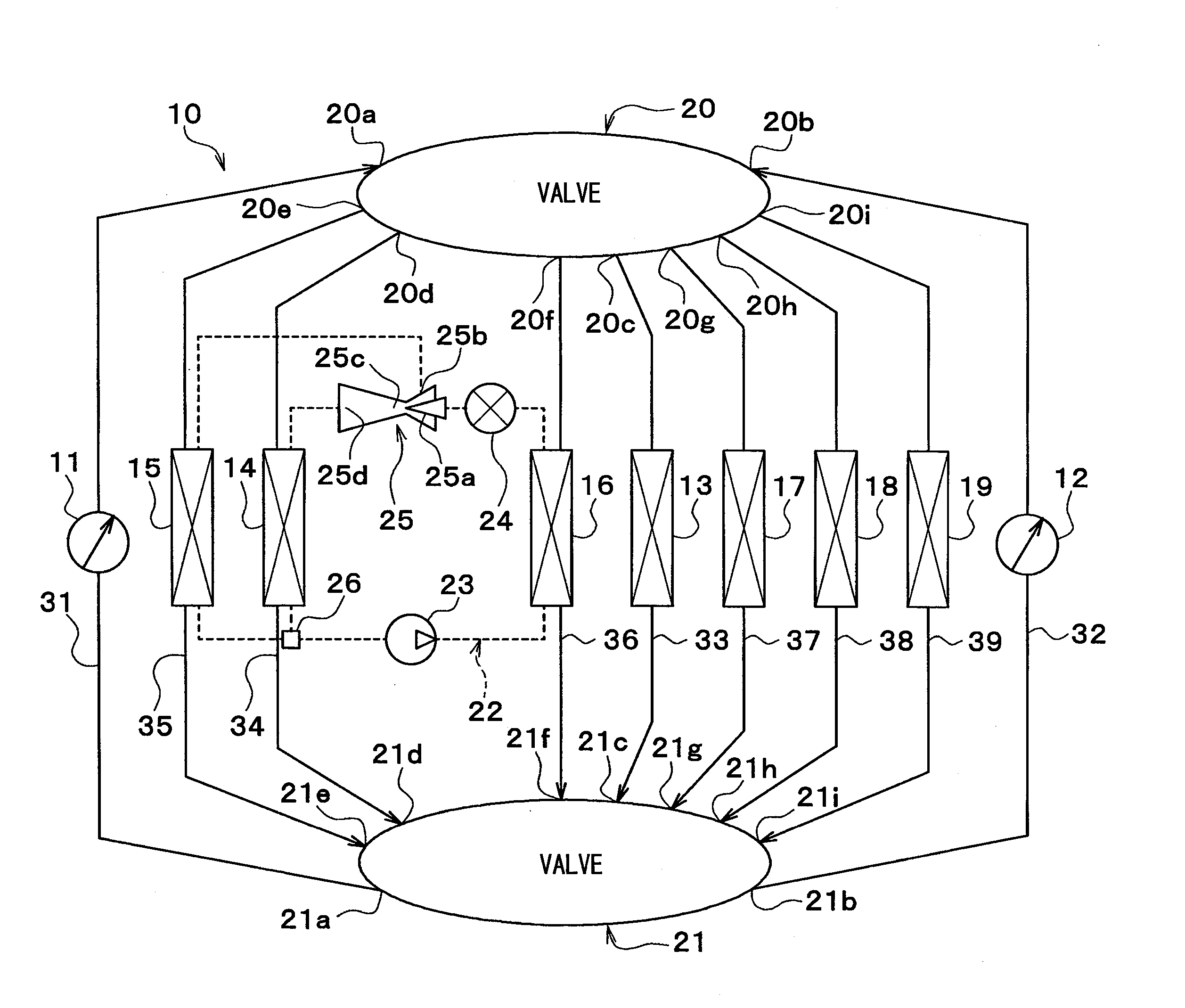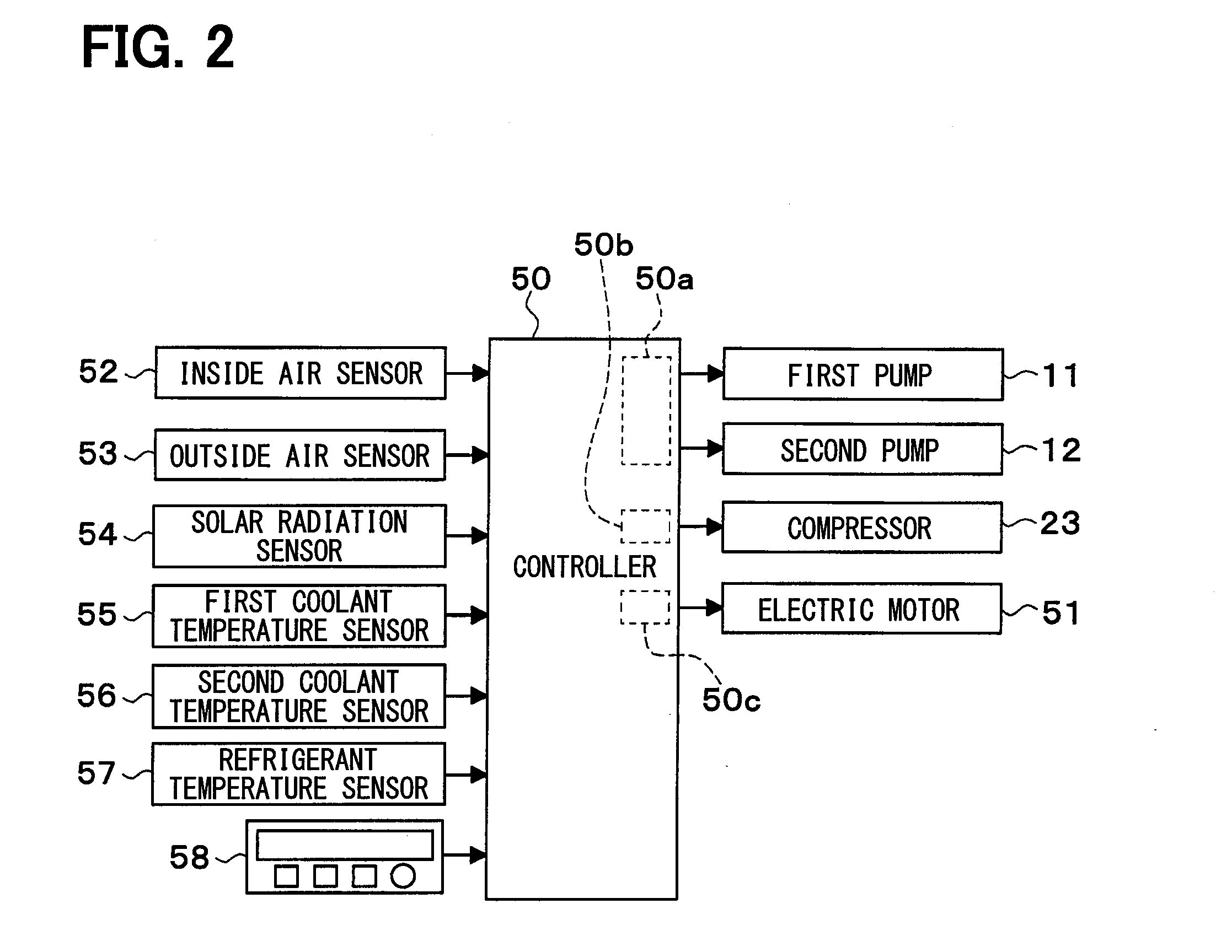Air conditioning device for vehicle
a technology for air conditioning devices and vehicles, which is applied in the direction of heat pumps, domestic cooling devices, batteries, etc., can solve the problems of possible degraded heating performance, and achieve the effect of improving heating performance and increasing the density of refrigerant drawn into the compressor
- Summary
- Abstract
- Description
- Claims
- Application Information
AI Technical Summary
Benefits of technology
Problems solved by technology
Method used
Image
Examples
Embodiment Construction
[0024]A description will hereinafter be made on an embodiment on the basis of FIG. 1 to FIG. 6. A vehicular heat management system 10 shown in FIG. 1 is used to adjust various types of device provided in a vehicle and inside of a vehicle cabin at an appropriate temperature. In this embodiment, the vehicular heat management system 10 is applied to a hybrid vehicle that obtains drive power for a vehicle travel from an engine (i.e., an internal combustion engine) and an electric motor for travel.
[0025]The hybrid vehicle of this embodiment is a plug-in hybrid vehicle that can store electric power supplied from an external power source (i.e., a commercial power source) during parking of the vehicle in a battery mounted in the vehicle (i.e., an in-vehicle battery). A lithium-ion battery can be used as the battery, for example.
[0026]The drive power output from the engine is used not only for the vehicle travel but is also used to actuate a generator. The electric power generated by the gen...
PUM
| Property | Measurement | Unit |
|---|---|---|
| temperature | aaaaa | aaaaa |
| aspect ratio | aaaaa | aaaaa |
| pressure | aaaaa | aaaaa |
Abstract
Description
Claims
Application Information
 Login to View More
Login to View More - R&D
- Intellectual Property
- Life Sciences
- Materials
- Tech Scout
- Unparalleled Data Quality
- Higher Quality Content
- 60% Fewer Hallucinations
Browse by: Latest US Patents, China's latest patents, Technical Efficacy Thesaurus, Application Domain, Technology Topic, Popular Technical Reports.
© 2025 PatSnap. All rights reserved.Legal|Privacy policy|Modern Slavery Act Transparency Statement|Sitemap|About US| Contact US: help@patsnap.com



